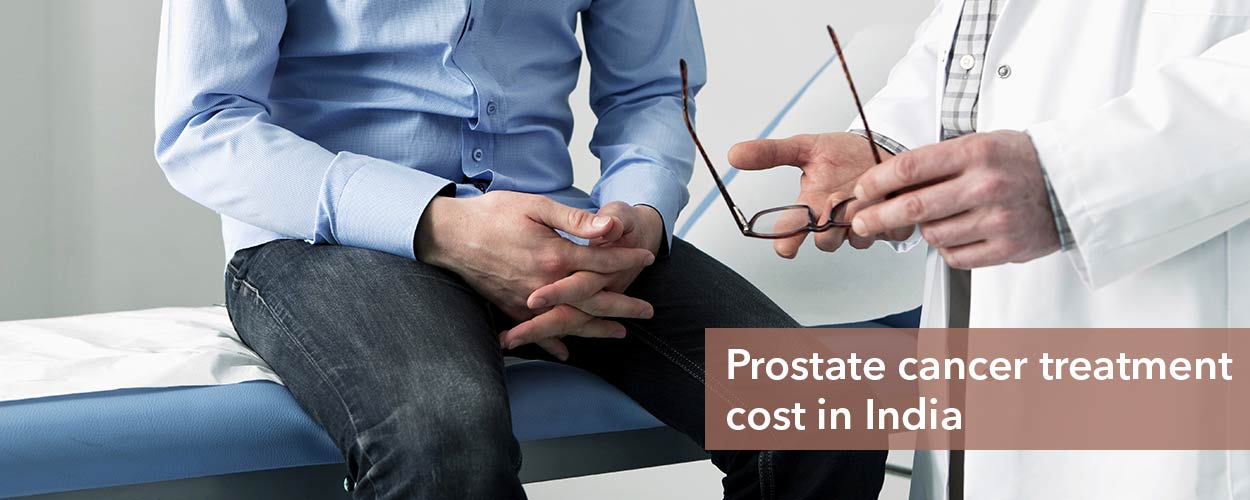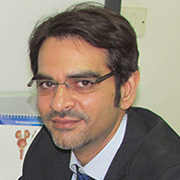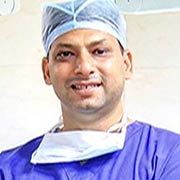Prostate cancer treatment
A multidisciplinary cancer team will be involved in diagnosing and formulating an appropriate treatment plan for a patient based on their age, general health status, and the stage of prostate cancer.
Active surveillance: If the cancer is found to be non-aggressive, then watchful waiting is recommended, which is also referred to as active surveillance. The patient will not undergo treatment immediately but have regular check-ups to monitor the cancer. This includes closely monitoring the growth of prostate cancer using tests including prostate specific antigen (PSA), digital rectal exam (DRE) tests and prostate biopsies on a regular interval. The treatment for the cancer will only be suggested if it grows or causes symptoms.
Aggressive types of cancer or those causing health problems may need treated with following options:
Surgery: Prostatectomy is the surgical procedure to remove the prostate cancer cells along with some surrounding healthy tissues. If the prostate cancer hasn’t spread outside the gland, the doctor may suggest radical prostatectomy for treatment. The entire prostate gland will be removed with this procedure. The prostate surgery in India can be performed in different ways and using sophisticated techniques such as robot system.
For advanced or recurrent cancer, other surgical procedures, such as removal of lymph nodes (Pelvic lymphadenectomy), may also be needed to completely remove the cancer cells in the body.
Transurethral resection of the prostate (TURP) is a surgical procedure in which the tissue from the prostate are removed using a resectoscope, a thin, lighted flexible tube. This tube along with a cutting tool is inserted through the urethra. Although, this procedure is usually done to treat benign prostatic hyperplasia, it can sometimes help relieve symptoms caused by a tumour. TURP might be suggested for men who have tumour in the prostate only and those who cannot undergo a radical prostatectomy.
Some patients may also require bilateral orchiectomy which involves surgical removal of both testicles.
The conventional open radical prostatectomy involves making a large incision in the lower abdomen (retropubic surgery) to access the prostate cancer cells to be removed. Open prostate surgery may also involve removal of prostate tissue through the perineum (perineum prostatectomy), the area between the scrotum and the anus, but this technique is not commonly performed.
The minimally invasive or key hole approaches such as laparoscopic (robotic surgery) radical prostatectomy require a few smaller incisions to be made on the abdomen. Laparoscopic and robot assisted radical prostatectomy have become very popular. These methods have several advantages over the open surgery, including shorter hospital stay, faster recovery, less post-operative pain and chances of complications.
The robot system allows high precision and eliminate hand related errors during the procedure. The surgeon controls the robot arms during the surgery, and use special surgical instruments to perform the operation.
Whether open or laparoscopic surgery, prostatectomy is a major operation, with a significant healing process. Depending on the type of technique, the patient may have to stay in the hospital for a few days. Typically, patients go home after the discharge with a catheter to help drain urine for 7 to 14 days.
Physical therapy may also be recommended to boost the recovery and strength of the patient. It includes Kegel exercises, which help build up pelvic floor muscles and may help patients dealing with persistent incontinence problem. The urologist and oncology tem will discuss the post-discharge instructions in details and assess the recovery during follow-up visits. There will be a gradual increase in the exercise tolerance which can be enhanced with walking more and more distances over the course of recovery period.
Certain physical activities such as calisthenics, weight lifting, golf, and other strenuous work are prohibited for about the 2 months following the surgery. This is to allow proper healing of the abdominal muscles and urethra post operation.
In some cases, nerve-sparing surgery might be an option, allowing the surgeon to save the nerves that control erection. However, this may not be possible for men who have large tumours or tumours very close to the nerves.
Possible risks of the prostate surgery:
- Erectile dysfunction
- Incontinence or leakage of urine from the bladder
- Shortening of the penile size
- Inguinal hernia: the bulging of part of the small intestine through the weak muscles into the groin
Radiation therapy: This is to eradicate the tumour cells using high-energy rays or X-rays to kill the cancer. It can be administered after the surgery to remove any cancer cells that might be left behind. Radiation may also be suggested when cancer has spread (metastasized) to the bone. There are mainly two types of radiation therapies –
- External radiation therapy: In this, a radiation machine outside the body is used to direct the radiation towards the cancer cells. IMRT is a type of external-beam radiation therapy in which images from CT scans are used to form a 3D picture of the prostate prior to the treatment. This information about the size, shape, and location of the prostate cancer is analyzed by the computer system to determine the amount of radiation is needed to destroy it. IMRT offers the benefit of giving high doses of radiation to the prostate without increasing the risk of damaging nearby organs.
- Internal radiation therapy: The doctor will surgically place radioactive seeds or pellets into or near the cancer cells to destroy them. Brachytherapy is an internal radiation therapy in which small grain sized radioactive seeds are placed in the prostate tissue.
Proton beam therapy can be used for prostate cancer treatment. Proton beam radiation therapy uses very small particles to kill the cancer cells that haven’t spread.
Nuclear medicine radionuclides based techniques, such as Alpha emitter radiation therapy are also showing effective results in treatment of prostate cancer. It involves the use of a radioactive substance to treat prostate cancer that might have spread to the bone. In Alpha emitter radiation therapy, radium-223, a radioactive substance is injected into the vein, which then collects in areas of bone with cancer and destroys the cancer cells.
Lutetium Prostate Specific Membrane Antigen (Lu-PSMA) therapy is another nuclear medicine based treatment for patients with prostate cancer of advanced stage or refractory to standard treatment approaches. The therapy involves the use of radioactive element to specifically target prostate cancer cells. This high precision treatment help prevent damage to healthy surrounding tissue while delivering a high dose radiation to the tumour cells.
Hormone therapy
This type of cancer treatment is based on targeting or blocking the action of hormones to stop cancer cell growth. Hormones are substances secreted by certain glands in the body and circulates in the bloodstream. For prostate cancer, male sex hormones can cause the tumour cells to grow. Reducing the amount of male hormones or block them using medication, surgery or other agents may help shrink the tumour.
Chemotherapy
Special anti-cancer drugs are used to shrink or kill the tumour. These drugs can be given as pills or medicines orally or through veins, or both. Systemic chemotherapy is administered by mouth or injected into a vein or muscle; the drugs enter via the bloodstream and reach cancer cells throughout the body. Regional chemotherapy involves directly placing the drug into the cerebrospinal fluid, a particular organ, or a body cavity such as the abdomen. This is to target the cancer cells in those areas. The method of giving chemotherapy depends on the type and stage of the cancer the patient is diagnosed with.
Biological therapy
This treatment uses the patient’s immune system to help the fight cancer or to control side effects caused by other cancer treatments. In this, biological substances made by the body or in a laboratory are used to boost, target or restore the natural defences of the body to work against the cancer.
Prostate cancer treatment in India may involve other type of therapies that can be an option for select patients (when standard procedures are not effective):
- High-intensity focused ultrasound: This therapy uses high-intensity focused sound waves (ultrasound) to kill cancer cells. For prostate cancer, an endorectal probe is used to produce the ultrasound waves.
- Cryotherapy: This treatment involves the use of a special probe that is placed inside or near the prostate cancer to freeze and kill the prostate cancer cells. It is also known as cryosurgery. Ultrasound is used to find the area that will be treated.
- Photodynamic therapy: In this type of cancer treatment, a drug and laser is used to destroy the cancer cells. A drug in an inactive form is injected into a vein. It will become active only when exposed to light. The drug is more likely to collect in the cancer cells than in normal cells. Fiber optic tubes are used to emit laser light over the cancer cells containing the drug, it becomes active and kills the cells. This therapy results in minimal damage to healthy tissue and is mainly used to treat tumours on, just under the skin or in the lining of internal organs.
- Bisphosphonate therapy: The bisphosphonate drugs, such as clodronate or zoledronate, can potentially be used to prevent or slow the growth of bone metastases. As the cancer progresses, it can spread to the bone. Men who have undergone antiandrogen therapy or orchiectomy are at a higher risk of bone loss. In such cases, bisphosphonate drugs can lessen the risk of bone fracture and other bone problems.












